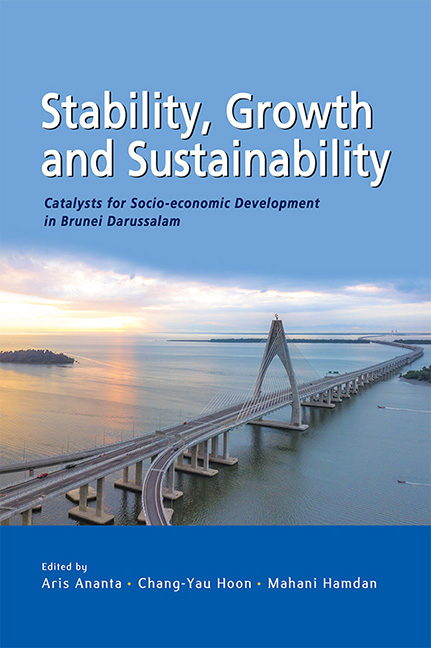7 - Changing Faces of Brunei Population
Published online by Cambridge University Press: 10 January 2024
Summary
UNDERSTANDING POPULATION DYNAMICS
Understanding population dynamics is very important for policymakers and business communities. They need to know the size, composition and geographical distribution of the population and how these have changed and will change over time. Population dynamics and its three main components (fertility, mortality and migration) affect various developmental sectors such as economy, politics, social and environment. Economic impacts of population dynamics operate through production, consumption and distribution. On the production side, the population provides capital and labour to the firms/institutions. In return, firms/institutions provide salaries and produce goods and services to fulfil the needs of the population. On the other hand, the population consumes goods and services and pays the producers. Therefore, the population has two functions: as producers and consumers. Information on producers and consumers is needed for the distribution system of goods and services and labour allocation, making development policies and business strategies.
Socially, population dynamics may result in behavioural and norm changes. People may behave differently in densely populated areas compared to those in sparsely populated areas; living in areas with many older persons may be different from living in areas with mostly younger persons; living in areas with many visitors from other places may be different from living in areas where the members of the population are homogenous and have few visitors.
Coupled with rising income and wealth, population growth places increasing pressures on the planet’s resources through consumption of water and air, clearing forests, and land use. This contributes to climate change and challenges environmental sustainability, with both global and local socio-economic-political implications.
There is a close relationship between population growth and economic growth. Expressed in percentage, economic growth is equal to population growth plus growth in per capita GDP (gross domestic product). However, to make effective targets of development, understanding the size of population is not sufficient—population composition matters more. Changing age composition from young to old, for instance, influences the labour market including pension and social protection systems, infrastructure, poverty, as well as demand for goods and services. This chapter describes and examines the population dynamics over time in Brunei.
- Type
- Chapter
- Information
- Stability, Growth and SustainabilityCatalysts for Socio-economic Development in Brunei Darussalam, pp. 161 - 194Publisher: ISEAS–Yusof Ishak InstitutePrint publication year: 2023



